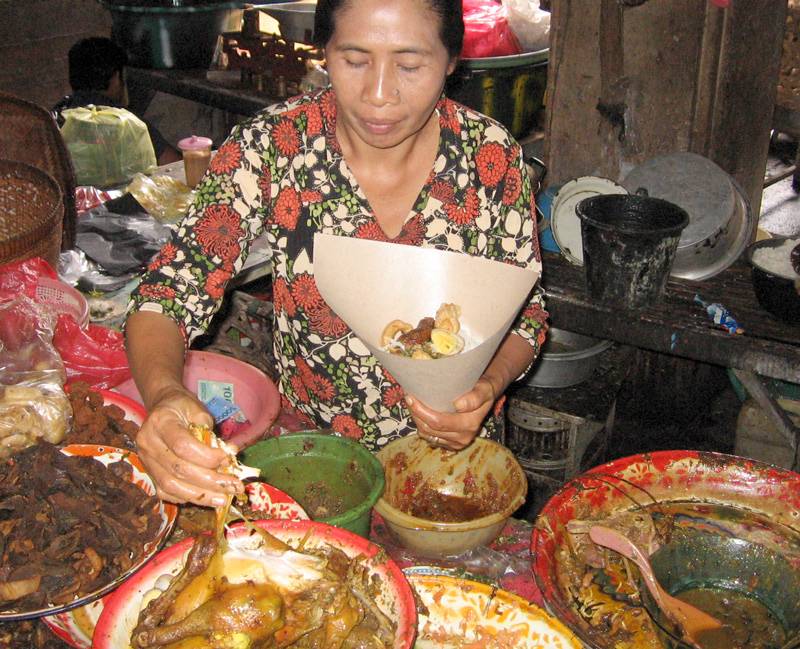 After three days in Jimbaran, we were tired of the beach and decided to go north to Ubud, the cultural capital of Bali. We hired a driver to take us to Ubud so that we could do a little hotel shopping. After making the rounds, we were torn between a beautiful self-catering villa in the rice fields ($15 a night for the whole house!) and the centrally located Ubud Village Hotel on Monkey Forest Road. Since just about everything in Bali is negotiable, we talked the hotel down from $80 to $60 a night so that clinched the deal.
After three days in Jimbaran, we were tired of the beach and decided to go north to Ubud, the cultural capital of Bali. We hired a driver to take us to Ubud so that we could do a little hotel shopping. After making the rounds, we were torn between a beautiful self-catering villa in the rice fields ($15 a night for the whole house!) and the centrally located Ubud Village Hotel on Monkey Forest Road. Since just about everything in Bali is negotiable, we talked the hotel down from $80 to $60 a night so that clinched the deal.
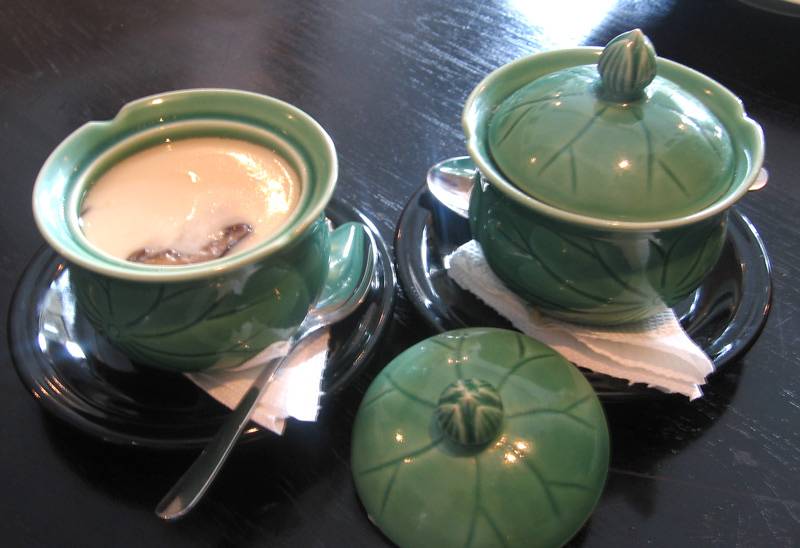 We were very happy with our decision as we soon discovered that Monkey Forest Road was the main street of central Ubud and this one-mile strip was literally packed solid with art galleries, great shopping and world-class alfresco restaurants — all within a steps of our hotel in either direction. And the prices are unbelievable — entrees range from $3 to $6, sushi is 50 cents a piece and a three-course gourmet dinner for two is no more than $25 (drinks and gratuity included).
We were very happy with our decision as we soon discovered that Monkey Forest Road was the main street of central Ubud and this one-mile strip was literally packed solid with art galleries, great shopping and world-class alfresco restaurants — all within a steps of our hotel in either direction. And the prices are unbelievable — entrees range from $3 to $6, sushi is 50 cents a piece and a three-course gourmet dinner for two is no more than $25 (drinks and gratuity included).
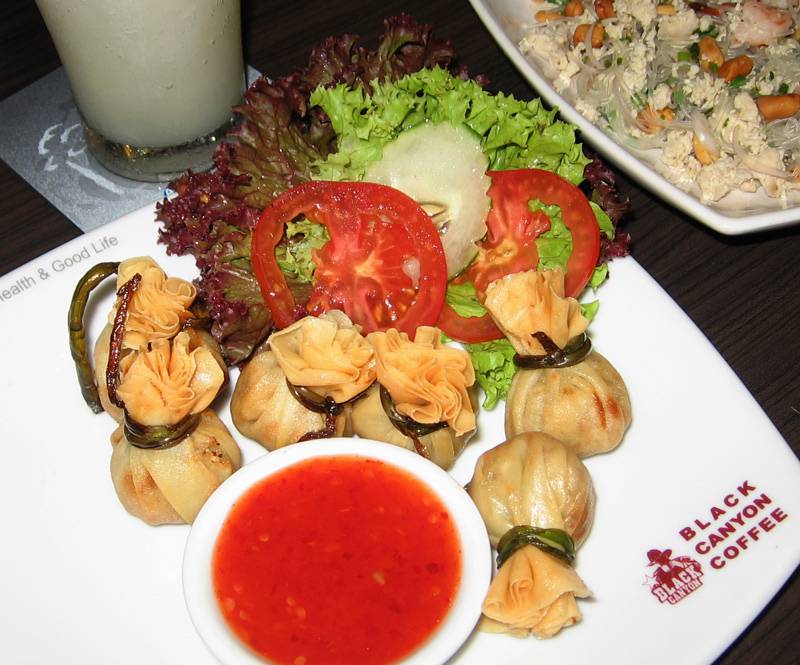 Since we’re graphic designers, we ate our way up and down the street choosing our restaurant based on the quality of the restaurant’s logo. A well-designed logo meant beautiful ambience, great presentation, and — because we’re in Ubud — great food! We love all the locally-owned places, each with their own personality and creativity (favorites so far include Ibu Rai, Three Monkeys, Jintarou, Cinta, Casa Luna).
Since we’re graphic designers, we ate our way up and down the street choosing our restaurant based on the quality of the restaurant’s logo. A well-designed logo meant beautiful ambience, great presentation, and — because we’re in Ubud — great food! We love all the locally-owned places, each with their own personality and creativity (favorites so far include Ibu Rai, Three Monkeys, Jintarou, Cinta, Casa Luna).
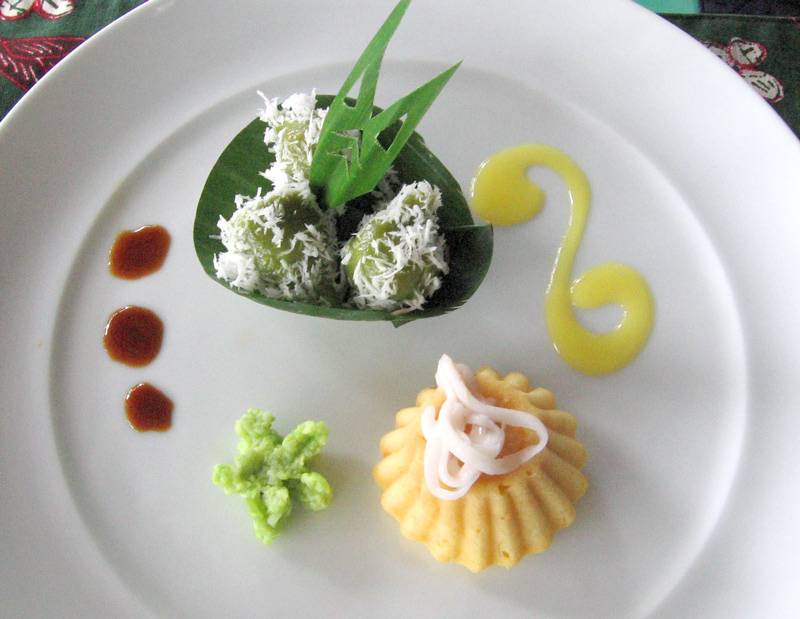 We decided to stay in Ubud for a while since the eating was good and cheap. But as we looked around the dining rooms of Monkey Forest Road restaurants, we noticed that there were no Indonesians eating with us (just a lot of happy Europeans, Japanese and even a few Aussies). So we wondered, where do Indonesians go when they’re hungry?
We decided to stay in Ubud for a while since the eating was good and cheap. But as we looked around the dining rooms of Monkey Forest Road restaurants, we noticed that there were no Indonesians eating with us (just a lot of happy Europeans, Japanese and even a few Aussies). So we wondered, where do Indonesians go when they’re hungry?
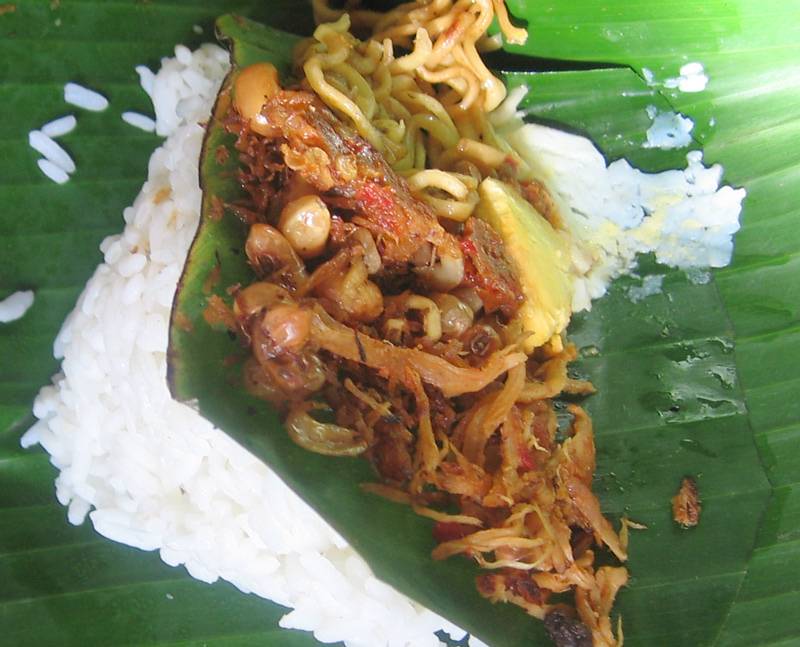 We’ve noticed smaller warungs (open-air restaurants) on side streets and alleys, but they’re usually empty. Curiosity takes us back to the market where we saw quite a few little food stands always buzzing with activity. So I decide to go for a taste test (my partner Bonnie decides to sit this one out). Each food stand seems to be a one-woman operation (the men all seem to be out on the street hustling to be hired as drivers). Many stands seems to serve exactly the same thing: (“rice in a packet” mixed with meat and other “stuff”). Other stands specialize in satay (meat on a stick). Most food stands do just take out, but a few have a table and a bench, so I choose one that looked popular and made myself comfortable. ?nasi>
We’ve noticed smaller warungs (open-air restaurants) on side streets and alleys, but they’re usually empty. Curiosity takes us back to the market where we saw quite a few little food stands always buzzing with activity. So I decide to go for a taste test (my partner Bonnie decides to sit this one out). Each food stand seems to be a one-woman operation (the men all seem to be out on the street hustling to be hired as drivers). Many stands seems to serve exactly the same thing: (“rice in a packet” mixed with meat and other “stuff”). Other stands specialize in satay (meat on a stick). Most food stands do just take out, but a few have a table and a bench, so I choose one that looked popular and made myself comfortable. ?nasi>
 Back on Monkey Forest Road, everyone spoke English so ordering was not a problem. Here in the market, I had to point and use hand gestures to get what I wanted. At the satay stand, a sign said ayam and kambing. I knew ayam was chicken, but when I asked about kambing, the woman shrugged and then thoughtfully made a funny sound: “baaah-baaah.” Ah, goat. Yes, two please.
Back on Monkey Forest Road, everyone spoke English so ordering was not a problem. Here in the market, I had to point and use hand gestures to get what I wanted. At the satay stand, a sign said ayam and kambing. I knew ayam was chicken, but when I asked about kambing, the woman shrugged and then thoughtfully made a funny sound: “baaah-baaah.” Ah, goat. Yes, two please.
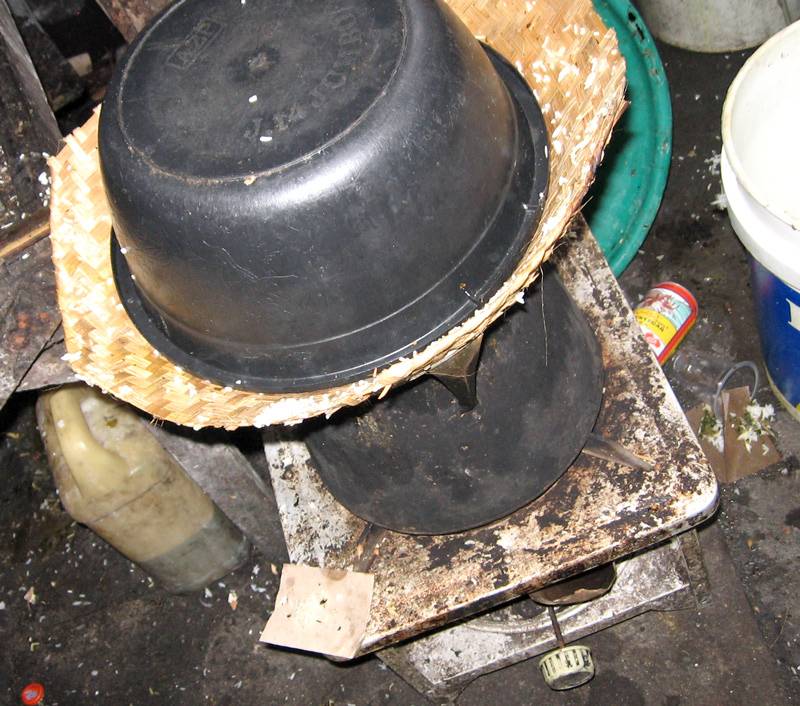 Everything at the food stand was primitive but efficient. The rice cooker was a portable kerosene stove on the dirt floor, steaming the rice in a cone-shaped bamboo steamer. The satay was barbecued over coconut shells kept hot with a small electric fan. Everything tasted just as good as restaurant food, but at $1 to $2 a serving, it’s a real bargain (even though I was probably charged tourist prices). Sanitation was a little scary — there was no refrigeration or running water in sight and people kept throwing money on top of the food when they were ordering — but I survived the meal to write about it.
Everything at the food stand was primitive but efficient. The rice cooker was a portable kerosene stove on the dirt floor, steaming the rice in a cone-shaped bamboo steamer. The satay was barbecued over coconut shells kept hot with a small electric fan. Everything tasted just as good as restaurant food, but at $1 to $2 a serving, it’s a real bargain (even though I was probably charged tourist prices). Sanitation was a little scary — there was no refrigeration or running water in sight and people kept throwing money on top of the food when they were ordering — but I survived the meal to write about it.








